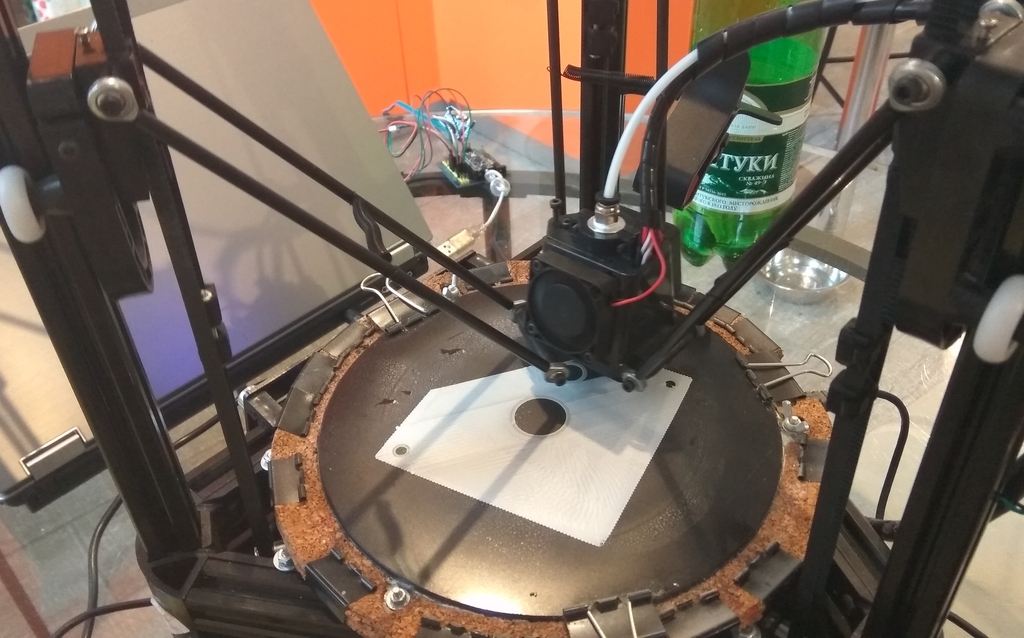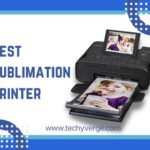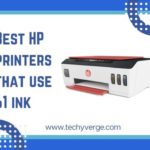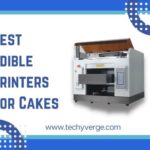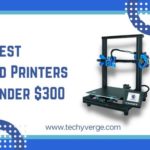The printer is mostly used for printing documents, images, and other stuff. However, those printers are also important for printing invitations. To create an outstanding invitation suite for your guests, you need to know which printers and inks to use.
In this article, I will explain the micro make 3d printer and its types and invitation printing features. So just read till the end.
Let’s review
Micromake 3D Printer Review:
Micromake 3D Printer Review
Specifications:
- Material: ANYCUBIC
- Product Dimensions: 10 x 10 x 10 inches
- Weight: 23.4 pounds
Micromake 3d printer L2 is a desktop resin 3D printer. In a pre-built condition, the machine lets users print their first part or functional prototype in minutes. In addition to a metal body and a 2K 2560 x 1600 LCD screen.
Micromake 3d printer L2 is a desktop resin 3D printer. In a pre-built condition, the machine lets users print their first part or functional prototype in minutes. In addition to a metal body and a 2K 2560 x 1600 LCD screen,
it’s got commendable printing accuracy thanks to the 2K 2560 x 1600 LCD screen. A stop-and-start feature and auto-leveling help improve first-layer deposition and reduce print failures. In L2, you can post-cure right after you 3D print something.
As a result, it stands out from other 3D printers in the same price range. In terms of its price and functionality, how reliable is L2 compared to its competitors? Only after we take a closer look will we know.
1. Features
The wear-resistant resin tank and rotating build platform on this 3D printer are both designed to save resin that would otherwise be wasted. Additionally, the printer has a touchscreen LCD interface for easy operation.
Users can also print almost any geometry with the printer’s built-in software, which streamlines the entire slicing process.
Aside from prototyping, it’s also used for small-scale manufacturing like jewelry, miniatures, and upgraded functional parts. The following are some of L2’s most eccentric features.
2. Multiple Modes of Connecting
3D printers made of resin usually have only one way to connect. This gives users the flexibility they need. Any 3D printing process starts with the file transfer phase, so it’s important.
Micromake makes exchanging files on the printer easy by providing two modes of connection: 1) USB, and 2) Wi-fi. Even without being around the printer, you can exchange files with the second option.
3. Built-in UV Curing Lamp
The UV curing lamp source is the most important part of any resin 3D printer because it determines how well the liquid resin is cured. UV curing lamp built into printers eliminates the hassle of arranging the source with resin material, which would have been the case otherwise.
Additionally, this will ensure that more of the resin will be exposed to the UV curing lamp, meaning less uneven curing and a better surface finish.
In addition, it enables post-curing just after 3D printing, so users can get high-quality parts even when making objects with small geometry.
4. Considerable Build Volume
The build volume of the L2 is what sets it apart from other resin 3D printers in the same price range.
With L2, you can create many parts and functional prototypes at the same time. The resin 3D printer can create objects that cannot be made otherwise in one shot
5. Auto-leveling
Leveling of the print bed is perhaps the most significant part of any 3d printing process. Users can get the assurance to build a part exactly how it is in their design by getting the leveling right.
Therefore it is very important to ensure that the leveling is right which is not always possible if the operators are inexperienced. But Micromake has put in place an automatic leveling system in l2 that enables users to level the print bed of it with a single touch. Thereby not compromising on the print quality at all.
6. 2K LCD Screen
There’s almost no difference between an SLA and DLP 3D printer if the latter doesn’t have an LCD screen. DLP 3D printers have LCD screens, so they cure resin faster while maintaining print quality than SLA 3D printers.
With the L2, the resin is exposed to the curing source through a 2K LCD screen. A 2560 x 1600 resolution LCD screen is available here, which not only provides high stability but also ensures a high level of printing accuracy, as well.
7. Stop and Start Automatically During an Electricity Outage
L2 is equipped with a unique stop-and-start feature that saves all the progress in work made at the time of electricity downtown.
Because of this when the power resumes users can start from the same point where they left before.
8. Shipping to Printing Within Minutes
L2 is shipped in a pre-built condition so users do not need to go through any sort of setup procedure like typical DIY kits by referring to any sort of manual or video tutorials.
Simply place it on the dedicated table and connect it to the power source to initiate the touchscreen interface setup after which you are ready to go.
9. Specifications:
The micromake 3d printer technology used in Micromake L2 is DLP. This printer can print parts and functional prototypes up to 190 mm x 120 mm x 225 mm in size and layer heights ranging from 20 to 200 microns.
To create typical geometries, resin materials are cured using a UV light source of 405 nanometers. Users can easily control various functions and adjust basic print settings with the printer’s 4.3-inch touchscreen interface.
With its aluminum frame, the machine doesn’t vibrate, even when printing parts with a lot of volume. L2 comes preassembled, so you can start printing in minutes. Weighing 15 kilograms, the printer is easy to transport.
10. Software:
The L2 Control Center is an application that runs on the Linux operating system. A built-in slice engine is provided for users of L2 that allows them to slice as well as print STL files without having to use any external software to accomplish this.
The L2 platform comes with an additional program known as the Creation Workshop that offers some extremely convenient features that make the design work of users that much easier
11.Print Quality:
A layer height of 25 microns is possible with L2. The result is smoother exterior surfaces on parts and functional prototypes.
A high-resolution LCD screen ensures accurate results with excellent detailing and surface finish. Furthermore, print quality and repeatability are commendable with 74-micron XY axis accuracy.
Micromake L2 3D Printer [ Buying Guide 2024 ]: Unleashing Precision and Speed
Welcome to the realm of Micromake L2, a game-changer in the realm of desktop 3D printing. Priced under $500, this advanced printer transcends the boundaries of conventional FDM and SLA alternatives, offering a unique blend of affordability, speed, and impeccable print quality.
In this comprehensive buying guide, we delve into the standout features of the Micromake L2, exploring its exceptional capabilities, practical design, and user-friendly attributes. Whether you’re a seasoned enthusiast or an intermediate user, the Micromake L2 promises to elevate your 3D printing experience to new heights. Join us as we unravel the key elements that make the Micromake L2 a must-have in your creative arsenal.
The Micromake L2 3D Printer is an excellent choice within the desktop 3D printer category, providing users with a cost-effective solution priced under $500. With its noteworthy features and capabilities, the L2 stands out as a compelling alternative for both FDM and SLA 3D printing enthusiasts.
Key Features of Micromake L2 3D Printer
1. Print Speed
The Micromake L2 employs DLP (Digital Light Processing) technology, enabling remarkable print speeds.
In comparison to SLA printers, the L2 stands out for its impressive efficiency, making it a suitable choice for users who prioritize faster printing times.
2. Print Quality
Despite its rapid print speed, the L2 maintains a high standard of print quality comparable to SLA 3D printers.
This ensures that even small objects with intricate details can be reproduced accurately, catering to users who demand precision in their 3D prints.
3. Printer Capability
The L2 is compatible with a wide range of resins available on the market.
This versatility allows users the flexibility to experiment with different materials, ensuring a diverse range of applications for their 3D printing projects.
4. Printer Practicality
Micromake L2 prioritizes user convenience with several practical features, making it accessible and efficient:
a. Automatic Bed Leveling
The printer incorporates automatic bed leveling, streamlining the setup process and ensuring an optimal printing surface for consistent results.
b. Touchscreen Interface
The intuitive touchscreen interface enhances user interaction, providing a user-friendly experience.
This feature simplifies navigation through settings and options, making the 3D printing process more accessible.
c. Stop-Start Feature
The stop-start feature adds a layer of practicality by allowing users to pause and resume printing at their convenience.
This feature is beneficial for those who may need to interrupt the printing process temporarily.
5. User Expectations
The Micromake L2 is well-suited for intermediate users familiar with the basics of 3D printing.
Its balance of speed, quality, and user-friendly features caters to the expectations of users seeking a reliable 3D printer for projects that demand a higher level of precision and efficiency.
For users seeking an affordable yet advanced desktop 3D printer under $500, the Micromake L2 stands out as an excellent choice. Its impressive print speed, high-quality prints, compatibility with various resins, and user-friendly features make it a valuable asset for intermediate 3D printing enthusiasts looking to elevate their printing capabilities.
Final Verdict:
This desktop resin micromake 3d printer features an integrated UV light module, a pre-built body, and a highly stable frame which makes it one of those rare desktop resin 3D printers that can be purchased for an affordable price.
There are a variety of models available from the L2 which are designed to be a budget-friendly alternative to DLP 3D printers that can be used to print functional prototypes and parts of high quality.
Frequently Asked Questions:
There are powdered versions of titanium, steel, stainless steel, aluminum, copper, cobalt chrome, titanium, tungsten, and nickel-based alloys available for 3D printing, along with precious metals like gold, platinum, palladium, and silver.
The most common micromake 3d printer technique is extrusion (also called FDM for Fused Deposition Modeling or FFF for Fused Filament Fabrication).
A great example of this is wood. 3D printing of wood now supports processes such as filament extrusion and powder bed manufacturing. Humans have already lost 54% of the total number of trees on our planet, according to a study published in the journal Nature.
Slower speeds yield better quality for 3D printing. Depending on what you’re making, you go at a different speed.
It is possible to make a lot of money by starting a 3D printing business. It is possible to achieve great success if you plan well, execute well, and work hard.
The following information will help you launch a successful 3D printing company. A business plan is a critical component of starting a 3D printing business.
- HP Color LaserJet Pro M283fdw Wireless Laser Printer Review - March 5, 2024
- HP Envy 4520 Wireless All-in-One Color Photo Printer Review - March 5, 2024
- Can Laser Printers Print Color? Affordable Color Laser Printer - February 22, 2024

